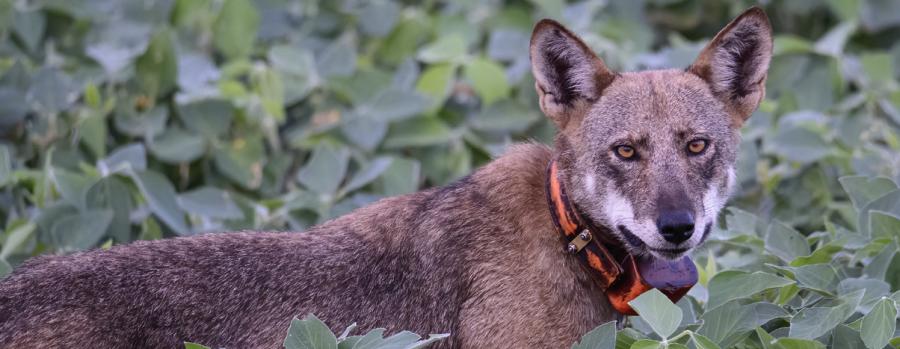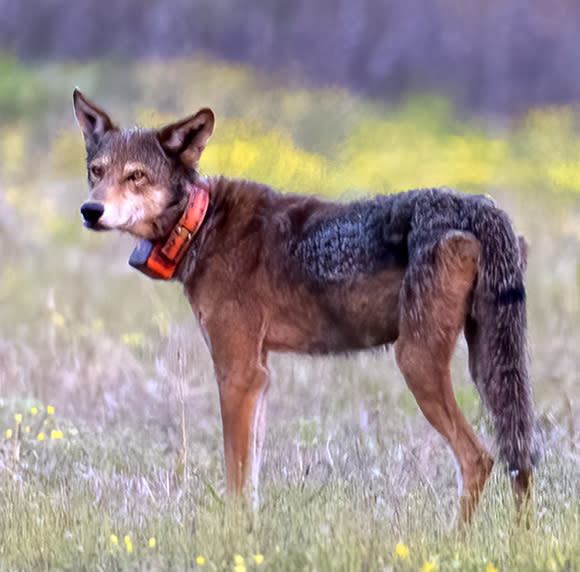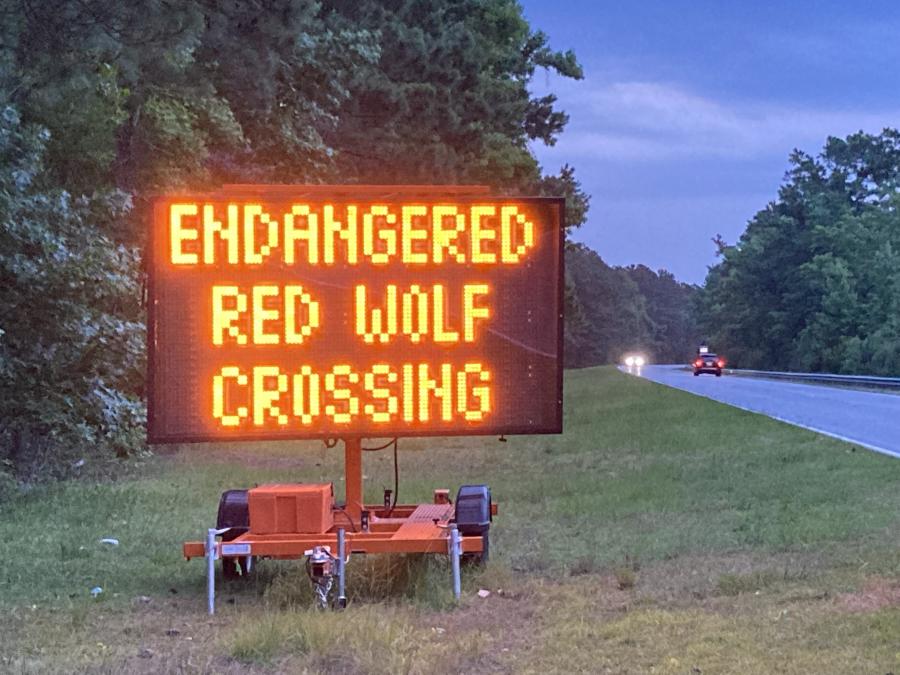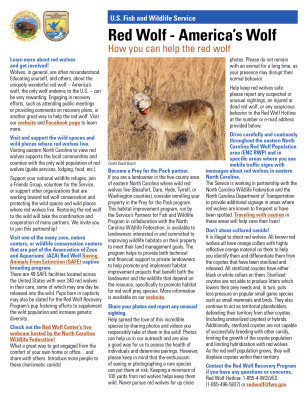Header Photo: Running Wild Media
In 1980 red wolves were declared extinct in the wild. The final few were captured to start a captive breeding program to save the species. Today, there are over 50 zoos and wildlife conservation centers throughout the United States that are part of the Red Wolf Saving Animals From Extinction (SAFE) program. The first red wolves reintroduced to the wild were released onto Alligator River National Wildlife Refuge right here in Dare County. This Red Wolf population remains today as the only wild red wolf population in the world. The wild population was very successful until about 2014. However, based on many factors the wild red wolf population decreased dramatically. Now, there are approximately 20-22 red wolves in the wild today with efforts ongoing to re-grow the population in eastern North Carolina. What exactly happened to this unique species and why are they so rare?

Why is the Red Wolf population on the decline?
The red wolf population was unfortunately on the decline for quite some time and even with the increase in the population over the last few years there is still a long way to go to get back to the population numbers from the past, but I’m sure that you are wondering why there was a decline? Well, the primary reasons are human caused mortalities. Gunshots are the leading cause of deaths for red wolves and vehicle strike mortalities are the second. Other reasons include habitat loss, hybridization between red wolves and coyotes, and mismanagement. Fortunately, most of these issues can be resolved by bringing awareness to the problems.
What would happen if Red Wolves went extinct?
It is very simple. The absence of red wolves throughout the Southeastern United States has also allowed for the expansion of the range for coyotes, which can impact prey species differently. Red wolves help maintain the balance of the ecosystems that evolved with their presence by removing old and sick animals and helping to maintain healthy population levels of smaller predators such as raccoons, which in turn can reduce the impacts on other species from these smaller predators.
What is the U.S. Fish and Wildlife Service doing currently to protect red wolves in the wild?
Currently, the U.S. Fish and Wildlife Service is focused on increasing the wild population and working with the Red Wolf SAFE program. The Red Wolf SAFE program breeds red wolves to help increase their population size and the U.S. Fish and Wildlife Service releases some back into the wild and monitors them. All known wild red wolves and red wolves released from the SAFE population are fitted with bright orange radio collars with orange reflective material to help distinguish them from coyotes. This is done to reduce the likelihood of gunshot mortalities from misidentification. Also, the U.S. Fish and Wildlife Service has collaborated with the North Carolina Wildlife Federation (NCWF) and the Red Wolf Coalition (RWC) to purchase mobile electronic highway message boards to use along roadways to alert drivers where red wolves are known to be active. Red wolves are monitored as closely as possible and if/when they near major roads or other areas that could pose a danger to them, service personnel work to push them out of that area. In addition, the red wolf field team contacts private landowners where red wolves are known to be spending time, to make landowners aware of the presence of red wolves and to address any potential concerns. The red wolf field team also promptly responds to all calls, texts, or emails received from landowners regarding their concerns, sightings, and potential issues - 24/7.

What are the future plans or actions that need to take place in order to save red wolves?
On September 29, 2023, the U.S. Fish and Wildlife Service released the final Revised Recovery Plan for Red Wolves. Here is a summary:
- Recovery Vision
In the future, wild and free Red Wolves will coexist with humans in multiple populations across the historic range, where ongoing threats are effectively ameliorated through conservation activities, the public’s trust and engagement, and aligned policies among all involved with Red Wolf recovery. The recovery of the Red Wolf will provide a sense of community ownership, cultural importance, and pride, in line with the values of the communities in which they occur.
- Recovery Strategy
The recovery strategy for the Red Wolf focuses on improving resiliency and redundancy and maintaining representation to meet the species’ needs for viability.
- Expand distribution of the species.
- Increase population abundance and maintain gene diversity long-term.
- Implement collaborative conservation to address species threats as well as societal values related to Red Wolf recovery.
What can we do to help?
Watch for red wolves, (most are wearing orange collars). Watch the road. Vehicle strikes are a major threat to red wolves, so watch out for highway signs, this means there are known red wolves in the area. Educate yourself. Visit some of the Visitor Centers in the area and the Red Wolf Center outside Columbia, NC to find out more information, and/or visit the Wildlife Refuges in the area. Lastly, share your photos and report unusual sightings.

Frequently Asked Questions
- Are red wolves dangerous to people? The short answer is no. Red wolves are actually very shy and elusive creatures. However, it is important to keep in mind that they are top predators and like any wildlife should not be approached. Do not feed red wolves or any other wildlife.
- Is the red wolf worth saving? Yes, the red wolf plays a very important role in maintaining our healthy and balanced ecosystem.
- Why are red wolves so important? They are important in regulating white-tailed deer populations; by preying on old, sick or weak deer, and helping to make sure that they don’t overbrowse farmland and vegetation.
- What is the leading cause of red wolf deaths? Unfortunately, the leading cause of red wolf deaths are gunshot mortalities. However, red wolves are protected under the Endangered Species Act. Violations can cost up to $50,000 and up to a year in prison.
Quick Facts
- The red wolf is the most endangered species of wolves in the world.
- Red wolves are a distinct species but distantly related to gray wolves and coyotes. Size wise they are in between gray wolves and coyotes. They can have a variety of colors but often have reddish fur coats, longer legs and larger ears.
- Red wolves communicate through touch, smell, and vocalization. Their vocalizations are typically longer, deeper howls with some yipping sometimes mixed in at the end, while a coyote’s vocalizations are much higher pitched and are more like a series of yips and short howls
- Red wolves once were spread throughout the southeastern U.S., all the way from Texas to southern New York.
- Red wolves are the only wolf species found only in the United States and are the smallest wolf species in North America.


